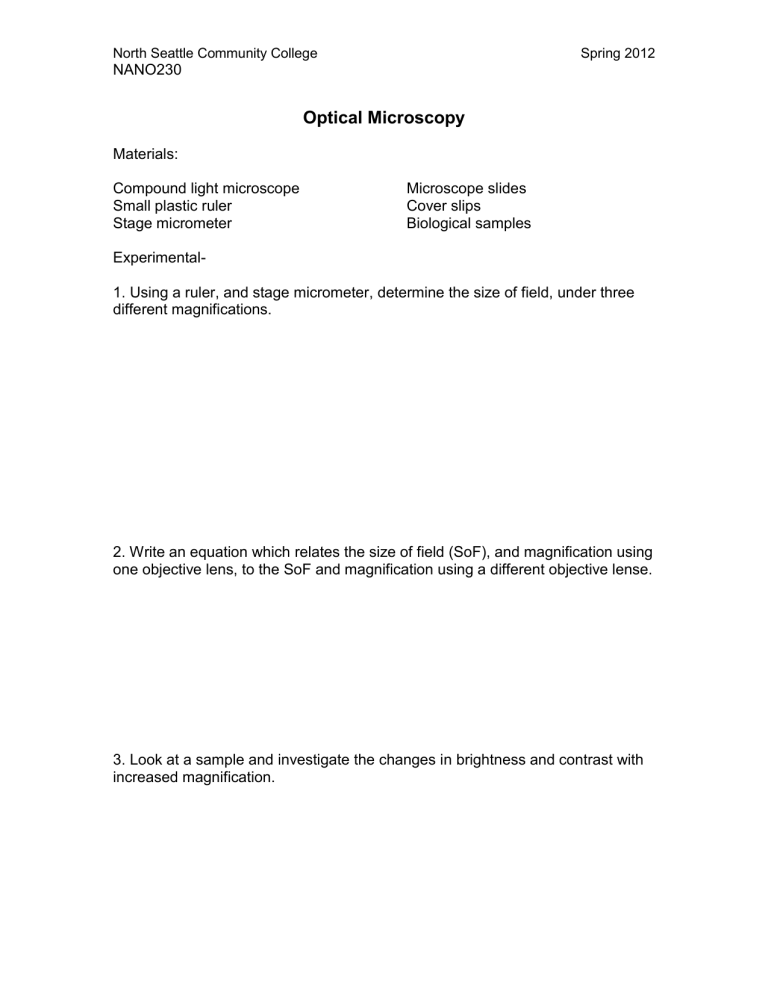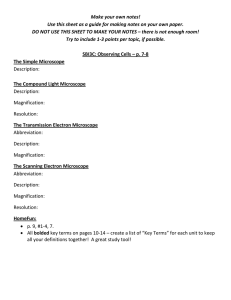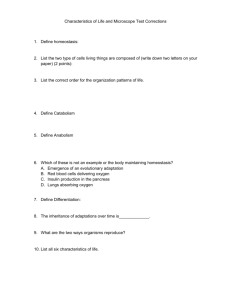Optical Microscopy

North Seattle Community College
NANO230
Spring 2012
Optical Microscopy
Materials:
Compound light microscope
Small plastic ruler
Stage micrometer
Microscope slides
Cover slips
Biological samples
Experimental-
1. Using a ruler, and stage micrometer, determine the size of field, under three different magnifications.
2. Write an equation which relates the size of field (SoF), and magnification using one objective lens, to the SoF and magnification using a different objective lense.
3. Look at a sample and investigate the changes in brightness and contrast with increased magnification.
North Seattle Community College
NANO230
Spring 2012
4. Draw the image of 8 different things you looked at under the light microscope.
Include a description , scale bar , and magnification with each image.
North Seattle Community College
NANO230
Spring 2012
Answer the following review questions and turn in your lab at the end of the period.
1. Draw a rough sketch of a simple compound light microscope. Include labels for the different parts.
2. What is the size of the field at each of the three different magnifications? How does the size of field relate to magnification power?
3. Why does using an oil emersion lens have an advantage compared to a conventional lens?
North Seattle Community College
NANO230
Spring 2012
4. In an optical microscope, what is the input, what is the output, and how is contrast produced?
5. What are the advantages of light microscopy compared to other characterization methods? What are the disadvantages?
6. Is light microscopy an ensemble measurement? Why or why not?
7. Choose a material and explain what properties a light microscope can characterize.




